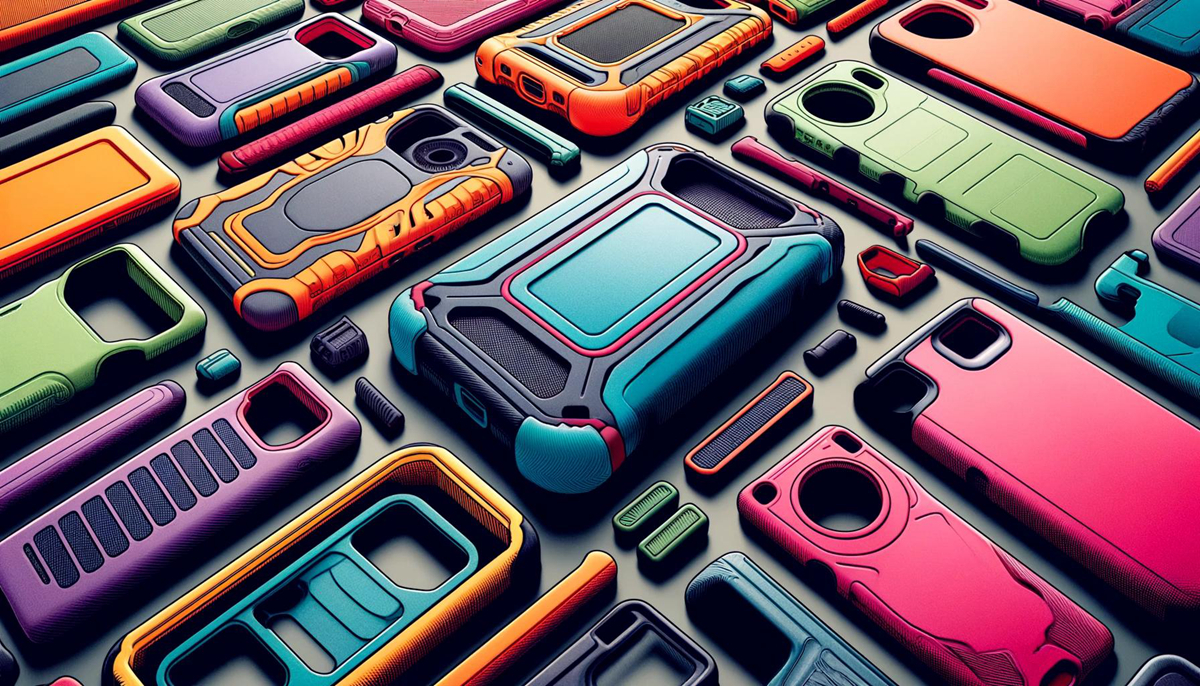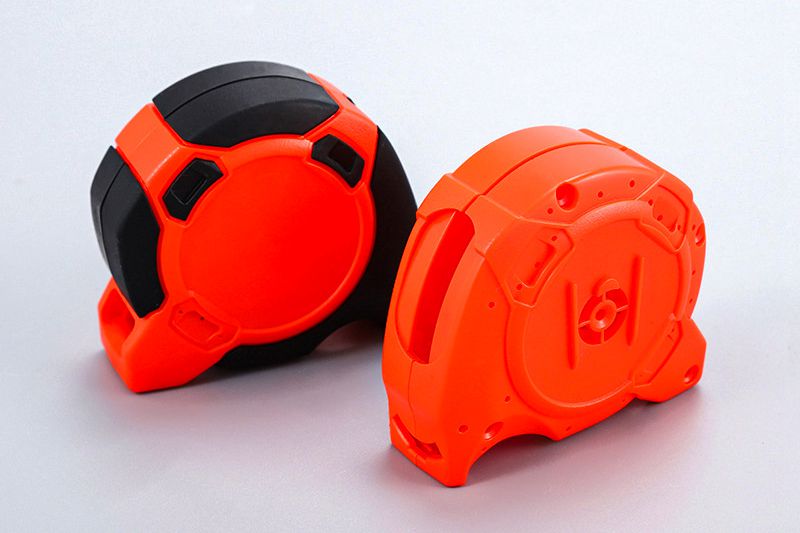Over molding is a transformative process in manufacturing, where two or more materials are used to create a single composite part. This technique involves molding one material over another previously molded part, effectively enhancing the final product's functionality, aesthetics, and durability. The choice of materials plays a crucial role in determining the performance and quality of the manufactured item. By selecting suitable materials, manufacturers can ensure that the product meets specific requirements such as increased strength, improved comfort, or enhanced aesthetic appeal. This blog will explore the typical materials used in over-molding, focusing on their properties, applications, and the strategic benefits they bring to different industries. Understanding the fundamentals of material selection in over-molding can lead to more innovative and successful product designs, whether for protective cases, soft-touch handles, or multi-material instruments.

Common Base Materials in Over Molding
The appropriate base material is foundational to achieving optimal performance and durability in over-molded parts. Here, we will explore some of the most commonly used base materials in over-molding, emphasizing their properties and typical applications.
Thermoplastics are frequently chosen as base materials due to their excellent moldability and robust physical properties. These plastics soften when heated and harden upon cooling, allowing them to be reshaped and reused. Examples include:
Polypropylene (PP): Known for its resistance to fatigue, most chemicals, and electric insulators. It is often used in automotive parts, consumer goods, and household appliances where durability is critical.
Polyamide (Nylon): Renowned for its wear resistance and mechanical strength, nylon is ideal for creating high-performance parts required in the automotive and electronics industries.
Thermosets Unlike thermoplastics, thermosets do not soften with heat after they are molded, making them ideal for high-temperature applications. Common thermosets used as base materials include:
Epoxy Resins: Known for their superior mechanical properties and excellent temperature and chemical resistance, epoxies are often used in aerospace and electronic components.
Phenolic Resins: With high thermal stability and flame resistance, phenolic resins are used in applications requiring high mechanical strength and low smoke production, such as in the electrical and automotive industries.
Properties Required for Base Materials The choice of base materials in over-molding must account for various properties to ensure compatibility and functionality:
High Melting Points: To prevent deformation during over-molding, base materials often require higher melting points than overmold materials.
Mechanical Strength: The base material must be strong enough to support the structure and maintain its integrity under mechanical stress.
Chemical and Thermal Resistance: These properties ensure that the base material can withstand harsh environments and exposure to various chemicals without degrading.
The selection of base materials significantly impacts the manufacturing process and the quality of the final product. Understanding the properties and applications of these materials helps manufacturers make informed decisions that enhance product performance and durability.
Popular Overmolding Materials
When selecting materials for overmolding, manufacturers consider several factors, such as compatibility with the base material, desired properties of the final product, and environmental conditions the product will face. Here, we delve into some popular materials used for overmolding and their advantages.
Thermoplastic Elastomers (TPEs) are a primary choice for overmolding due to their versatility and excellent bonding properties. TPEs combine the mechanical properties of thermosets with the processing advantages of thermoplastics:
Benefits: TPEs offer exceptional flexibility, shock absorption, and tactile qualities, making them ideal for creating ergonomic grips on tools or soft-touch surfaces on consumer electronics.
Applications: Widely used in automotive components, such as seals and gaskets, and medical devices like catheters, where flexibility and comfort are crucial.
Silicone Rubbers Silicone rubbers are favored for their high heat resistance and excellent chemical stability, making them suitable for a wide range of overmolding applications:
Benefits: They provide high thermal resistance, maintain flexibility over a wide temperature range, and are hypoallergenic, essential for medical and food-grade applications.
Applications: Commonly used in kitchenware, wearable devices, and healthcare products where non-toxicity and durability are required.
Urethanes, or polyurethanes, are known for their outstanding wear resistance and toughness. They are particularly effective in applications requiring durability and impact resistance:
Benefits: Urethanes offer great elasticity, excellent tear resistance, and load-bearing capacity.
Applications: Often used in manufacturing automotive parts, industrial wheels, and sports equipment where resilience and performance are critical.
Importance of Compatibility The successful bonding of overmolding materials to base materials hinges on their chemical and physical compatibility:
Adhesion: Proper adhesion between the overmold and the substrate is critical to avoid delamination or weakening of the bond under stress or over time.
Thermal Compatibility: The overmolding material must withstand the heat from the overmolding process without degrading, and both materials should have compatible thermal expansion coefficients to ensure stability across varying temperatures.

Factors Influencing Material Selection
Choosing suitable materials for overmolding is not just about matching physical properties; it involves thoroughly understanding the product's intended use, mechanical requirements, and cost considerations. This section discusses the key factors influencing material selection in overmolding, ensuring optimal performance and cost-effectiveness.
Product Application The intended use of the product dictates the choice of materials due to varying performance requirements:
Medical Devices: Materials like medical-grade silicone are chosen for their biocompatibility and sterilizability, essential for patient safety.
Consumer Electronics: Durability, aesthetics, and tactile feel are crucial, leading to selecting materials like TPEs for soft-touch components.
Mechanical Requirements The mechanical demands of the product also play a critical role in material selection:
Strength and Durability: Products subjected to mechanical stress or harsh environments may require robust materials like nylon or reinforced composites.
Flexibility and Elasticity: Elastomers like silicone or TPEs are preferred for flexible products like seals and joints.
Cost Considerations Budget constraints can significantly influence material choices, with the cost-effectiveness of each material being a key consideration:
Material Costs: Higher-performance materials like silicone can be more expensive than alternatives like TPEs, impacting the overall cost of production.
Manufacturing Efficiency: Some materials offer savings through easier processing or lower cycle times, which can offset their initial higher costs.
Compatibility Between Materials Ensuring compatibility between the base and overmolding materials is vital for product reliability:
Chemical Compatibility: Materials must resist chemical degradation when in contact with each other or when exposed to the environment.
Thermal Compatibility: The thermal expansion coefficients of the base and overmolding materials should be compatible to prevent delamination or warping during temperature fluctuations.
Over Molding Case Studies
To illustrate the practical applications and benefits of careful material selection in overmolding, this section presents several case studies that highlight successful implementations across different industries. These examples demonstrate how the right material choices can solve specific design challenges and improve product performance.
Case Study 1: Automotive Gear Shift
Challenge: Design a gear shift that is durable, comfortable, and can withstand constant use and temperature variations.
Solution: The base was made from polyamide for its high strength and thermal stability. Overmolded with thermoplastic elastomer (TPE), the gear shift gained a soft, non-slip surface that enhances grip and comfort.
Outcome: The over-molded gear shift met the mechanical and aesthetic requirements and improved user satisfaction with its ergonomic design.
Case Study 2: Waterproof Outdoor Equipment
Challenge: Create rugged, waterproof enclosures for outdoor electronic equipment that must endure extreme weather conditions.
Solution: The substrate was crafted from polycarbonate for its impact resistance and clarity. Silicone rubber was chosen for overmolding to ensure a waterproof seal and resistance to temperature fluctuations.
Outcome: The resultant product provided reliable protection against environmental factors, ensuring the longevity and functionality of the electronics within.
Case Study 3: Medical Prosthetic Device
Challenge: Develop a prosthetic device that is comfortable for long-term wear and resistant to body fluids.
Solution: The structural parts of the prosthetic were made using durable, lightweight polypropylene. Overmolded with medical-grade silicone, the device offered comfort and flexibility and was hypoallergenic.
Outcome: Overmolding with silicone made the prosthetic skin-friendly and improved its durability and patient compliance due to increased comfort.
These case studies showcase the strategic role of material selection in overmolding, emphasizing how it directly contributes to solving design challenges and enhancing product functionality. Each example highlights the importance of understanding the material properties and how they can meet specific industry needs and customer expectations. Through these practical applications, manufacturers can see the benefits of thoughtful material integration in their product designs.
Plastic Injection Molding Material
Try Design, Quotation, and Prototyping Works For Free
Neway provides free Consultative Design and rapid prototyping services for valid projects for free.
1. CNC Machining Prototyping Service
Correctly fill in your information and send it to our engineer to get free service.
评论
发表评论